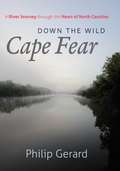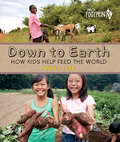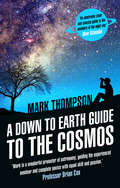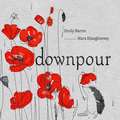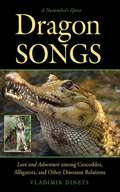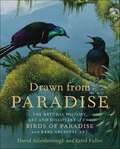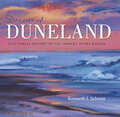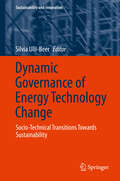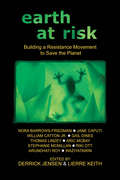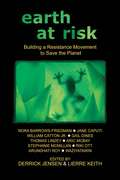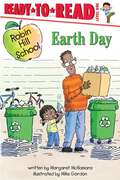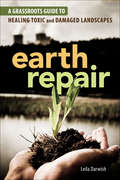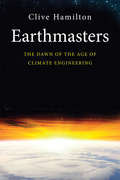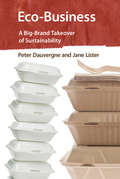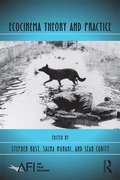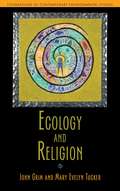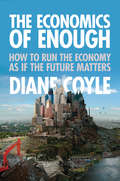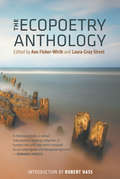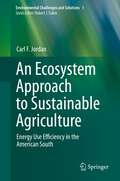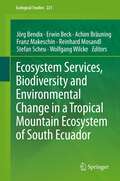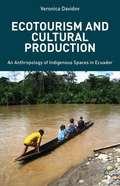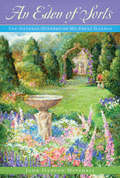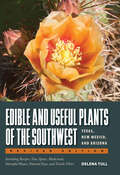- Table View
- List View
Down the Wild Cape Fear
by Philip GerardIn Down the Wild Cape Fear, novelist and nonfiction writer Philip Gerard invites readers onto the fabled waters of the Cape Fear River and guides them on the 200-mile voyage from the confluence of the Deep and Haw Rivers at Mermaid Point all the way to the Cape of Fear on Bald Head Island. Accompanying the author by canoe and powerboat are a cadre of people passionate about the river, among them a river guide, a photographer, a biologist, a river keeper, and a boat captain. Historical voices also lend their wisdom to our understanding of this river, which has been a main artery of commerce, culture, settlement, and war for the entire region since it was first discovered by Verrazzano in 1524. Gerard explores the myriad environmental and political issues being played out along the waters of the Cape Fear. These include commerce and environmental stewardship, wilderness and development, suburban sprawl and the decline and renaissance of inner cities, and private rights versus the public good.
Down To Earth: How Kids Help Feed the World (Orca Footprints #1)
by Nikki TateKids all over the world help collect seeds, weed gardens, milk goats and herd ducks. From a balcony garden with pots of lettuce to a farm with hundreds of cows, kids can pitch in to bring the best and freshest products to their families' tables—and to market. Loaded with accessible information about the many facets of farming, Down to Earth takes a close look at everything from what an egg carton tells you to why genetic diversity matters—even to kids.
A Down to Earth Guide to the Cosmos
by Mark ThompsonTo the beginner, the star-filled night sky can seem mysterious and unfathomable. But with this book as a guide the awesome nature of the Cosmos is brought down to Earth. Over the course of twelve chapters Mark Thompson, one of the presenters on BBC One’s Stargazing Live and the resident astronomer on ITV’s The Alan Titchmarsh Show, will take you on a journey through space, tackling the key concepts of astronomy and unlocking the secrets of the sky. From the origins of our Universe to the ever evolving techniques used to explore deep space, A Down to Earth Guide to the Cosmos traces the journey of galactic discovery that has obsessed mankind for thousands of years.Accompanying the narrative, a series of monthly sky guides focus on the astronomical highlights visible at each given time of year, with handy charts to show you exactly what to look for and how to navigate around the sky at night. As fascinating as it is accessible, A Down to Earth Guide to the Cosmos is a must for anyone who gazes up and wishes they knew more about the final frontier...
Downpour
by Emily Martin Mara ShaughnessyDownpour is the enchanting story of a rainy day turned magical. A rainy day is usually the time to clomp around in rubber boots and discover worms and puddles and other such rainy day things. But this is no ordinary rainy day. Embark on a journey of discovery as the rain begins to wash away the color from the bright red poppies in a field. Follow the color red on its journey, page after page, as it infuses myriad quirky and everyday objects with its bright cheerful hue: from the beaks of curious birds to the big wheel at the faraway fair. In a fresh, poetic style, with bright splashes of color on each page, this high contrast book will allow young readers to learn about color and build their vocabulary while stimulating their senses.
Dragon Songs: Love and Adventure among Crocodiles, Alligators, and Other Dinosaur Relations
by Vladimir DinetsA born naturalist and a fearless traveler, Vladimir Dinets wrote travel guides, conducted field research, and lived a couple of lives before he was accepted into the PhD program in zoology at the University of Miami. He thought crocodiles were a dead-end research topic--survivors from the age of the dinosaurs but not much else--until he witnessed groups of up to seventy alligators performing mating choruses that included infrasound vibrations--a form of communication extremely rare in nature--and a "dance" unknown in the scientific literature but that resembled a scene from Jurassic Park. To prove his thesis about the language of crocodiles, he spent the next six years traveling around the world on shoestring budgets and in extreme circumstances, studying almost every living species. At the same time, as a man desiring companionship in life, he sought love.With adventures on five continents, Dragon Songs is his account of this quest. It includes an escape from a boiling lava lake in the Afar Desert, being chased up a tree by a tiger in India, hitching a ride with a cocaine smuggler in Bolivia, and diving with giant Greenland sharks--all in the name of studying crocodiles, among which he routinely paddled in his inflatable kayak. Of course, not everything went according to plan. But, in the end, his ground-breaking research helped change the field. And during the course of his adventures, he met and courted his future wife.
Drawn from Paradise: The Natural History, Art and Discovery of the Birds of Paradise with Rare Archival Art
by David Attenborough Errol FullerFrom the moment Europeans were introduced to the birds of paradise in the early sixteenth century, their unique beauty was recognized and commemorated in the first name that they were given - birds so beautiful they must be from paradise. Originally they were thought not to have legs and therefore never to land. Still very rarely encountered, even in their natural habitat of New Guinea, they are still birds that elicit sheer awe in those who are lucky enough to see them. Drawn From Paradise will showcase the magnificence and beauty of the birds of paradise as they have never before been seen, with more than two-hundred hand-painted images and sketches by the men who originally studied them and luminary artists such as Jacques Barraband, William Hart, John Gould, Rubens and Breughel, to name a few. The art comes from the private collections of the two authors and has been rarely if ever published. Not only will the book feature the beautiful Greater Bird of Paradise-a bird that was originally believed to have been sent from Paradise, and was thought to never touch the earth-but it will also present more than forty other distinct species currently recognized-each representing amazing differences in size, shape, and color patterning.The introduction provides a brief history into the discovery of these illustrious birds, from how they were originally perceived and idolized by the natives of New Guinea, to the arrival of Europeans, who were immediately captivated by their bright, vibrant colors. The chapters are ordered according to the sequence in which the birds representing the various genera made their appearance in Europe (thereby highlighting the books educational aspect). Within its pages, readers will catch a glimpse of these birds through vivid, highly-detailed painting, as well as learn more about each individual bird and genus-comparisons and contrasts between the males and females, as well as between the different genus's.A tour through art and history, with a good deal of ornithology thrown in, Drawn From Paradise is not only a must-have for ornithologists and bird-watchers, but also a beautiful collectible for students, artists, and aesthetes. Its central idea is to showcase the breathtaking beauty of these birds and the enormous interest that still surrounds them even today.
Dreams of Duneland: A Pictorial History of the Indiana Dunes Region
by Kenneth J. SchoonThe towering sand dunes along Lake Michigan not far from Chicago are one of the most unexpected natural features of Indiana. Dreams of Duneland is a beautifully illustrated introduction to the Dunes region, its history, and future prospects. This area of shifting sands is also a place of savanna, wetland, prairie, and forest that is home to a wide diversity of plant and animal species. The preserved area of the Indiana Dunes National Lakeshore sits by residential communities, businesses, and cultural attractions, evidence of a long history of competition for the land among farmers, fur traders, industrialists, conservationists, and urban and recreational planners. With more than 400 stunning images, the book brings to life the remarkable story of this extraordinary place.
Dynamic Governance of Energy Technology Change
by Silvia Ulli-BeerFormulating effective responses to the global challenges of mitigating climate change and securing a sustainable energy future requires a clear understanding of the interdependent causalities between institutions, local decision making, strategic alliances and eco-innovations, as well as policies. It has been acknowledged that the linear "Manhattan project" model is not an adequate governance model for mastering the dynamic complexity of socio-technical transitions; therefore this book aims at advancing research on systematic transition management models. It offers qualitative and quantitative analyses of socio-technical transitions in road transportation and housing, bringing together tailored theorizing on sustainability transitions and applied system dynamics modeling. It highlights the interconnected causal feedbacks that are required to overcome the lock-in situation in road transportation and housing fueled by fossil energies. Showing which concerted actions and framework conditions are required in the transition phases in order to initiate and sustain socio-technical transition, it serves as a guide to model-based strategy making, policy design and analyses in support of sustainable futures.
Early Events in Monocot Evolution
by Paul Wilkin Simon J. MayoTracing the evolution of one of the most ancient major branches of flowering plants, this is a wide-ranging survey of state-of-the-art research on the early clades of the monocot phylogenetic tree. It explores a series of broad but linked themes, providing for the first time a detailed and coherent view of the taxa of the early monocot lineages, how they diversified and their importance in monocots as a whole. Featuring contributions from leaders in the field, the chapters trace the evolution of the monocots from largely aquatic ancestors. Topics covered include the rapidly advancing field of monocot fossils, aquatic adaptations in pollen and anther structure and pollination strategies and floral developmental morphology. The book also presents a new plastid sequence analysis of early monocots and a review of monocot phylogeny as a whole, placing in an evolutionary context a plant group of major ecological, economic and horticultural importance.
Earth at Risk: Building a Resistance Movement to Save the Planet (Flashpoint Press)
by Derrick JensenThe annual conference Earth at Risk: Building a Resistance Movement to Save the Planet features environmental thinkers and activists who are willing to ask the hardest questions about the seriousness of the planet's situation, and this book presents an impassioned critique of the dominant culture from every angle. Speakers from the conference are featured in this volume and include William Catton, who explains ecological overshoot; Thomas Linzey, who gives a fiery call for community sovereignty; Jane Caputi, who exposes patriarchy's mythic dismemberment of the goddess; Aric McBay, who discusses historically effective resistance strategies; and Stephanie McMillan, who takes down capitalism. One by one, they build an unassailable case that the rich should be deprived of their ability to steal from the poor and the powerful of their ability to destroy the planet. These speakers offer their ideas on what can be done to build a real resistance movement: one that includes all levels of direct action that can actually match the scale of the problem. Also included are the speakers Derrick Jensen, Arundhati Roy, Rikki Ott, Gail Dines, Waziyatawin, Lierre Keith, and Nora Barrows-Friedman.
Earth At Risk: Building A Resistance Movement To Save The Planet
by Derrick Jensen Lierre KeithThe annual conference Earth at Risk: Building a Resistance Movement to Save the Planet features environmental thinkers and activists who are willing to ask the hardest questions about the seriousness of the planet's situation, and this book presents an impassioned critique of the dominant culture from every angle. Speakers from the conference are featured in this volume and include William Catton, who explains ecological overshoot; Thomas Linzey, who gives a fiery call for community sovereignty; Jane Caputi, who exposes patriarchy's mythic dismemberment of the goddess; Aric McBay, who discusses historically effective resistance strategies; and Stephanie McMillan, who takes down capitalism. One by one, they build an unassailable case that the rich should be deprived of their ability to steal from the poor and the powerful of their ability to destroy the planet. These speakers offer their ideas on what can be done to build a real resistance movement: one that includes all levels of direct action that can actually match the scale of the problem. Also included are the speakers Derrick Jensen, Arundhati Roy, Rikki Ott, Gail Dines, Waziyatawin, Lierre Keith, and Nora Barrows-Friedman.
Earth Day: Ready-to-Read Level 1 (Robin Hill School)
by Margaret McNamaraIn the latest beginning reader from the bestselling, classroom based Robin Hill School series the class celebrates Earth Day! <p><p> The kids in Mrs. Connor's class are celebrating Earth Day, and everyone has lots of ideas on how to save the Earth...except Emma. Emma is worried that her ideas are not good enough. With the help of her dad and Mrs. Connor, Emma learns that her small ideas can have big results!
Earth Repair: A Grassroots Guide to Healing Toxic and Damaged Landscapes
by Leila DarwishMillions of acres of land have been contaminated by pesticides, improperly handled chemicals, dirty energy projects, toxic waste, and other pollutants in the United States alone. This toxic legacy impacts the environment, our health, our watersheds, and land that could otherwise be used to grow healthy local food and medicines. Conventional clean-up techniques employed by government and industry are tremendously expensive and resource-intensive and can cause further damage. More and more communities find themselves increasingly unable to rely on those companies and governments who created the problems to step in and provide solutions.Earth Repair describes a host of powerful grassroots bioremediation techniques, including:Microbial remediation-using microorganisms to break down and bind contaminantsPhytoremediation-using plants to extract, bind, and transform toxinsMycoremediation-using fungi to clean up contaminated soil and waterPacked with valuable, firsthand information from visionaries in the field, Earth Repair empowers communities and individuals to take action and heal contaminated and damaged land. Encompassing everything from remediating and regenerating abandoned city lots for urban farmers and gardeners to recovering from environmental disasters and industrial catastrophes such as oil spills and nuclear fallout, this fertile toolbox is essential reading for anyone who wishes to transform environmental despair into constructive action.Leila Darwish is a community organizer, urban gardener, and permaculture designer with a focus on using grassroots bioremediation to address environmental justice issues in communities struggling with toxic contamination of their land and drinking water.
Earthmasters
by Clive HamiltonThis book goes to the heart of the unfolding reality of the twenty-first century: international efforts to reduce greenhouse gas emissions have all failed, and before the end of the century Earth is projected to be warmer than it has been for 15 million years. The question "can the crisis be avoided?" has been superseded by a more frightening one, "what can be done to prevent the devastation of the living world?" And the disturbing answer, now under wide discussion both within and outside the scientific community, is to seize control of the very climate of the Earth itself. Clive Hamilton begins by exploring the range of technologies now being developed in the field of geoengineering--the intentional, enduring, large-scale manipulation of Earth's climate system. He lays out the arguments for and against climate engineering, and reveals the extent of vested interests linking researchers, venture capitalists, and corporations. He then examines what it means for human beings to be making plans to control the planet's atmosphere, probes the uneasiness we feel with the notion of exercising technological mastery over nature, and challenges the ways we think about ourselves and our place in the natural world.
Eco-Business: A Big-Brand Takeover of Sustainability (The\mit Press Ser.)
by Peter Dauvergne Jane ListerTwo experts explain the consequences for the planet when corporations use sustainability as a business tool.McDonald's promises to use only beef, coffee, fish, chicken, and cooking oil obtained from sustainable sources. Coca-Cola promises to achieve water neutrality. Unilever seeks to achieve 100 percent sustainable agricultural sourcing by 2020. Walmart has pledged to become carbon neutral. Big-brand companies seem to be making commitments that go beyond the usual “greenwashing” efforts undertaken largely for public-relations purposes. In Eco-Business, Peter Dauvergne and Jane Lister examine this new corporate embrace of sustainability, its actual accomplishments, and the consequences for the environment. For many leading-brand companies, these corporate sustainability efforts go deep, reorienting central operations and extending through global supply chains. Yet, as Dauvergne and Lister point out, these companies are doing this not for the good of the planet but for their own profits and market share in a volatile, globalized economy. They are using sustainability as a business tool. Dauvergne and Lister show that the eco-efficiencies achieved by big-brand companies limit the potential for finding deeper solutions to pressing environmental problems and reinforce runaway consumption. Eco-business promotes the sustainability of big business, not the sustainability of life on Earth.
Ecocinema Theory and Practice (AFI Film Readers)
by Sean Cubitt Stephen Rust Salma MonaniEcocinema Theory and Practice is the first collection of its kind—an anthology that offers a comprehensive introduction to the rapidly growing field of eco-film criticism, a branch of critical scholarship that investigates cinema’s intersections with environmental understandings. It references seminal readings through cutting edge research and is designed as an introduction to the field as well as a sourcebook. It defines ecocinema studies, sketches its development over the past twenty years, provides theoretical frameworks for moving forward, and presents eloquent examples of the practice of eco-film criticism through essays written by the field’s leading and emerging scholars. From explicitly environmental films such as Werner Herzong's Grizzly Man and Roland Emmerich's The Day After Tomorrow to less obvious examples like Errol Morris's Fast, Cheap & Out of Control and Christopher Nolan's Inception, the pieces in this collection comprehensively interrogate the breadth of ecocinema. Ecocinema Theory and Practice also directs readers to further study through lists of recommended readings, professional organizations, and relevant periodicals.
Ecology and Conservation of Estuarine Ecosystems
by Renzo Perissinotto Derek D. Stretch Ricky H. Taylor Renzo Perissinotto Derek D. StretchSt Lucia is the world's oldest protected estuary and Africa's largest estuarine system. It is also the centerpiece of South Africa's first UNESCO World Heritage Site, the iSimangaliso Wetland Park, and has been a Ramsar Wetland of International Importance since 1986. Knowledge of its biodiversity, geological origins, hydrology, hydrodynamics and the long history of management is unique in the world. However, the impact of global change has culminated in unprecedented challenges for the conservation and management of the St Lucia system, leading to the recent initiation of a project in support of its rehabilitation and long-term sustainability. This timely volume provides a unique source of information on the functioning and management of the estuary for researchers, students and environmental managers. The insights and experiences described build on over 60 years of study and management at the site and will serve as a valuable model for similar estuaries around the world.
Ecology And Religion
by Mary Evelyn Tucker John GrimFrom the Psalms in the Bible to the sacred rivers in Hinduism, the natural world has been integral to the world's religions. John Grim and Mary Evelyn Tucker contend that today's growing environmental challenges make the relationship ever more vital. This primer explores the history of religious traditions and the environment, illustrating how religious teachings and practices both promoted and at times subverted sustainability. Subsequent chapters examine the emergence of religious ecology, as views of nature changed in religious traditions and the ecological sciences. Yet the authors argue that religion and ecology are not the province of institutions or disciplines alone. They describe four fundamental aspects of religious life: orienting, grounding, nurturing, and transforming. Readers then see how these phenomena are experienced in a Native American religion, Orthodox Christianity, Confucianism, and Hinduism. Ultimately, Grim and Tucker argue that the engagement of religious communities is necessary if humanity is to sustain itself and the planet. Students of environmental ethics, theology and ecology, world religions, and environmental studies will receive a solid grounding in the burgeoning field of religious ecology.
The Economics of Enough: How to Run the Economy as If the Future Matters
by Diane CoyleThe world's leading economies are facing not just one but many crises. The financial meltdown may not be over, climate change threatens major global disruption, economic inequality has reached extremes not seen for a century, and government and business are widely distrusted. At the same time, many people regret the consumerism and social corrosion of modern life. What these crises have in common, Diane Coyle argues, is a reckless disregard for the future--especially in the way the economy is run. How can we achieve the financial growth we need today without sacrificing a decent future for our children, our societies, and our planet? How can we realize what Coyle calls "the Economics of Enough"? Running the economy for tomorrow as well as today will require a wide range of policy changes. The top priority must be ensuring that we get a true picture of long-term economic prospects, with the development of official statistics on national wealth in its broadest sense, including natural and human resources. Saving and investment will need to be encouraged over current consumption. Above all, governments will need to engage citizens in a process of debate about the difficult choices that lie ahead and rebuild a shared commitment to the future of our societies. Creating a sustainable economy--having enough to be happy without cheating the future--won't be easy. But The Economics of Enough starts a profoundly important conversation about how we can begin--and the first steps we need to take.
The Ecopoetry Anthology
by Robert Hass Laura-Gray Street Ann Fisher-WirthDefinitive and daring, The Ecopoetry Anthology is the authoritative collection of contemporary American poetry about nature and the environment--in all its glory and challenge. From praise to lament, the work covers the range of human response to an increasingly complex and often disturbing natural world and inquires of our human place in a vastness beyond the human.To establish the antecedents of today's writing,The Ecopoetry Anthology presents a historical section that includes poetry written from roughly the mid-nineteenth to the mid-twentieth century. Iconic American poets like Walt Whitman and Emily Dickinson are followed by more modern poets like Wallace Stevens, William Carlos Williams, Ezra Pound, and even more recent foundational work by poets like Theodore Roethke, Elizabeth Bishop, Robert Hayden, and Muriel Rukeyser. With subtle discernment, the editors portray our country's rich heritage and dramatic range of writing about the natural world around us.
An Ecosystem Approach to Sustainable Agriculture: Energy Use Efficiency in the American South (Environmental Challenges and Solutions #1)
by Carl F. JordanModern industrial agriculture is not sustainable because of its heavy reliance on petroleum, a non-renewable source of the energy used in farming, and because of pollution caused by petroleum products such as fertilizers and pesticides. A systems analysis of farming suggests that agriculture will be more sustainable when services of nature, such as nutrient recycling by soil micro-organisms and natural controls of insects, replace the services now provided by energy from petroleum. Examples are drawn from the Southeastern USA, but lessons learned can be applied worldwide.
Ecosystem Services, Biodiversity and Environmental Change in a Tropical Mountain Ecosystem of South Ecuador
by Achim Bräuning Erwin Beck Franz Makeschin Jörg Bendix Reinhard Mosandl Stefan Scheu Wolfgang WilckeAn interdisciplinary research unit consisting of 30 teams in the natural, economic and social sciences analyzed biodiversity and ecosystem services of a mountain rainforest ecosystem in the hotspot of the tropical Andes, with special reference to past, current and future environmental changes. The group assessed ecosystem services using data from ecological field and scenario-driven model experiments, and with the help of comparative field surveys of the natural forest and its anthropogenic replacement system for agriculture. The book offers insights into the impacts of environmental change on various service categories mentioned in the Millennium Ecosystem Assessment (2005): cultural, regulating, supporting and provisioning ecosystem services. Examples focus on biodiversity of plants and animals including trophic networks, and abiotic/biotic parameters such as soils, regional climate, water, nutrient and sediment cycles. The types of threats considered include land use and climate changes, as well as atmospheric fertilization. In terms of regulating and provisioning services, the emphasis is primarily on water regulation and supply as well as climate regulation and carbon sequestration. With regard to provisioning services, the synthesis of the book provides science-based recommendations for a sustainable land use portfolio including several options such as forestry, pasture management and the practices of indigenous peoples. In closing, the authors show how they integrated the local society by pursuing capacity building in compliance with the CBD-ABS (Convention on Biological Diversity - Access and Benefit Sharing), in the form of education and knowledge transfer for application.
Ecotourism And Cultural Production
by Veronica DavidovEcotourism is a unique facet of globalization, promising the possibility of reconciling the juggernaut of development with ecological/cultural conservation. Davidov offers a comparative analysis of the issue using a case study of indigenous Kichwa people of Ecuador and their interactions with globalization and transnational systems.
An Eden of Sorts: The Natural History of My Feral Garden
by John Hanson MitchellTwenty-five years ago John Hanson Mitchell cut down a 1 1/2-acre stand of seventy-five-year-old white pines and planted a garden in their place. An Eden of Sorts is a history of the plants and animals that lived on the tract over the next decades. In a survey he made before taking down the pines, Mitchell counted no more than five or six flowering plants and shrubs. Over the years he created a series of fanciful garden "rooms" in the Italian style. Now, in addition to an intriguing garden of earthly delights, he has recorded more than one thousand species of plants and animals on the property. This is a paradoxical yet hopeful narrative of what can happen to a plot of land when it is properly managed.
Edible and Useful Plants of the Southwest: Texas, New Mexico, and Arizona
by Delena TullA guide to useful Southwestern wild plants, including recipes, teas, spices, dyes, medicinal uses, poisonous plants, fibers, basketry, and industrial uses.All around us there are wild plants useful for food, medicine, and clothing, but most of us don&’t know how to identify or use them. Delena Tull amply supplies that knowledge in this book, which she has now expanded to more thoroughly address plants found in New Mexico and Arizona, as well as Texas.Extensively illustrated with black-and-white drawings and color photos, this book includes the following special features:· Recipes for foods made from edible wild plants· Wild teas and spices· Wild plant dyes, with instructions for preparing the plants and dying wool, cotton, and other materials· Instructions for preparing fibers for use in making baskets, textiles, and paper· Information on wild plants used for making rubber, wax, oil, and soap· Information on medicinal uses of plants· Details on hay fever plants and plants that cause rashes· Instructions for distinguishing edible from poisonous berries Detailed information on poisonous plants, including poison ivy, oak, and sumac, as well as herbal treatments for their rashes
